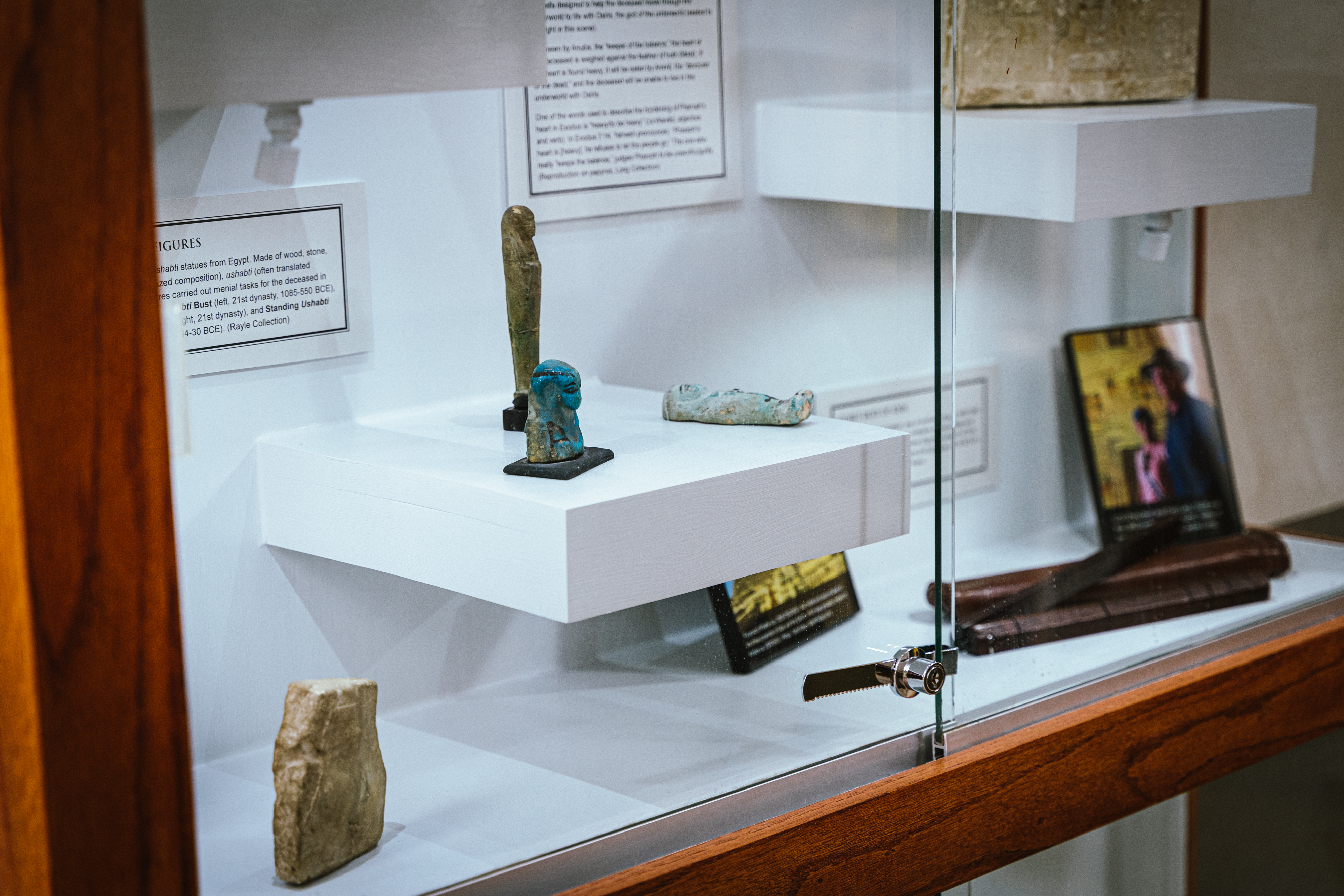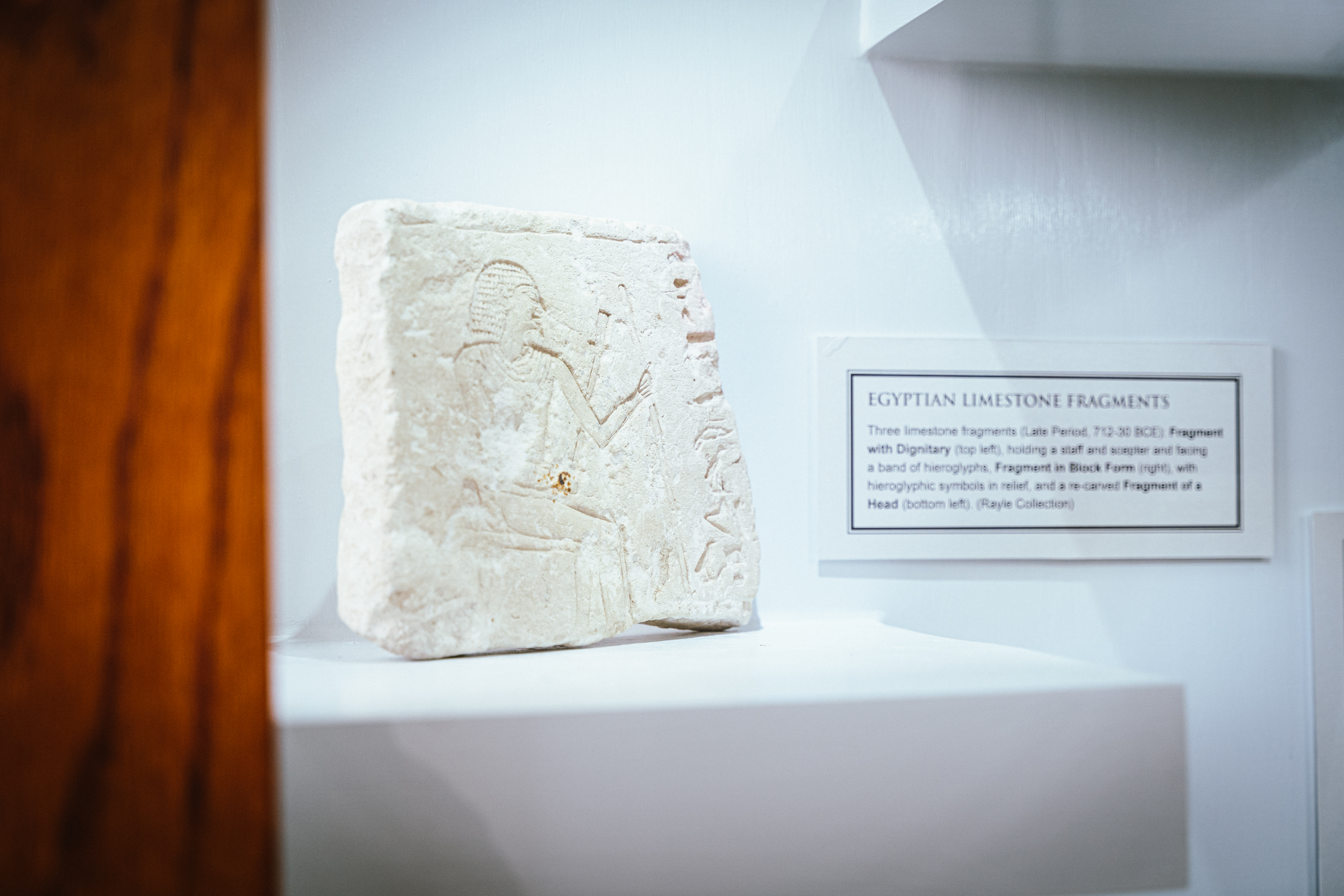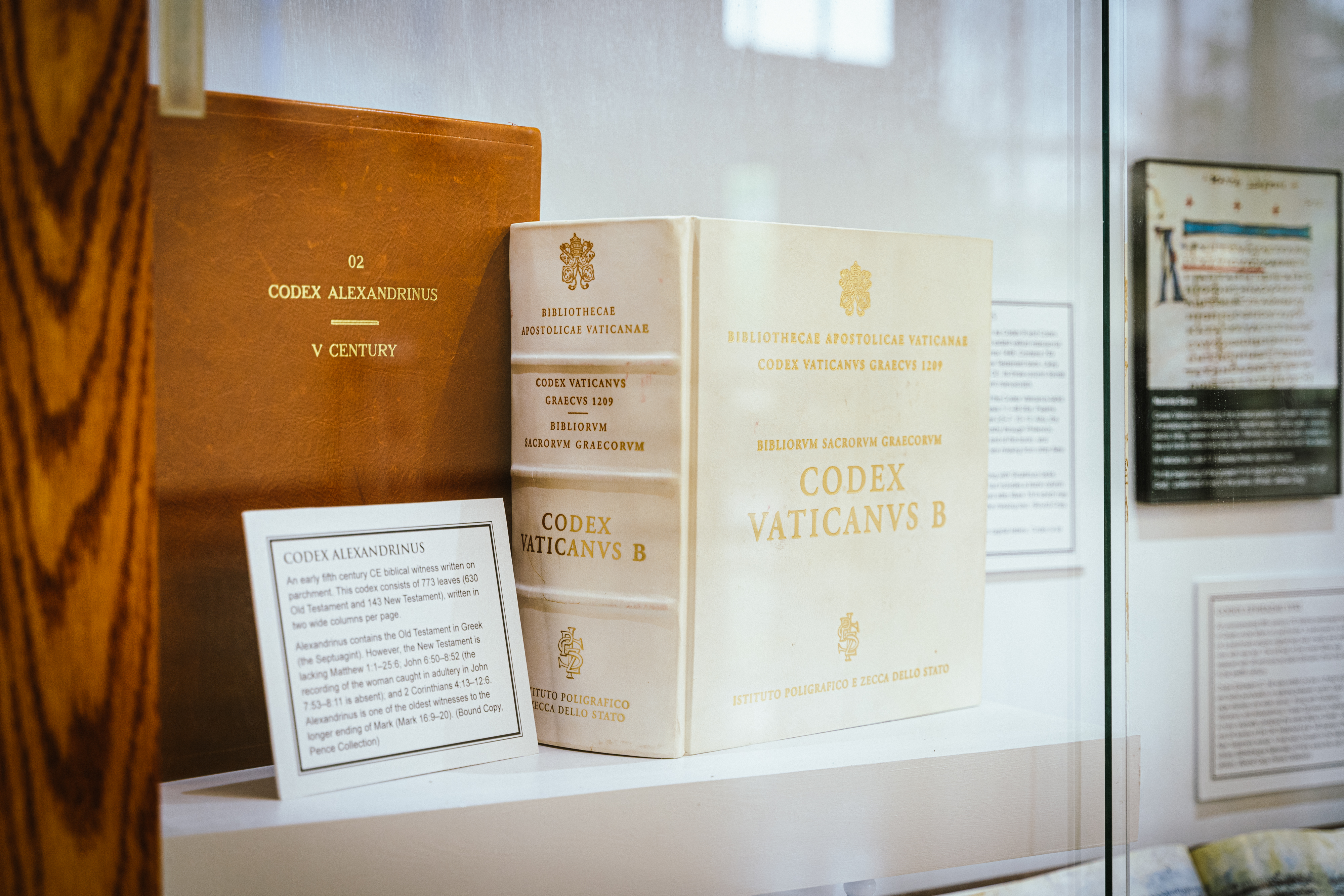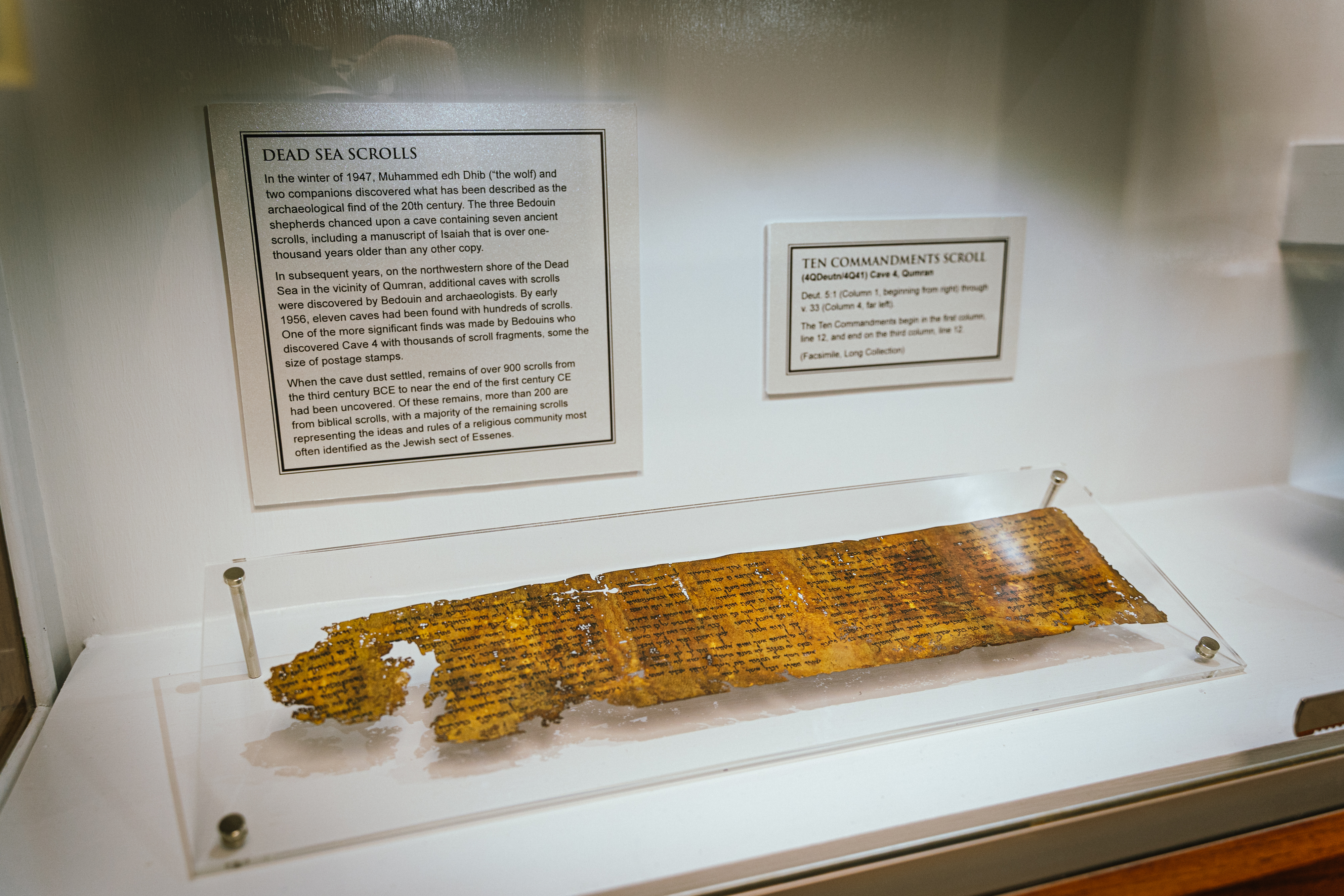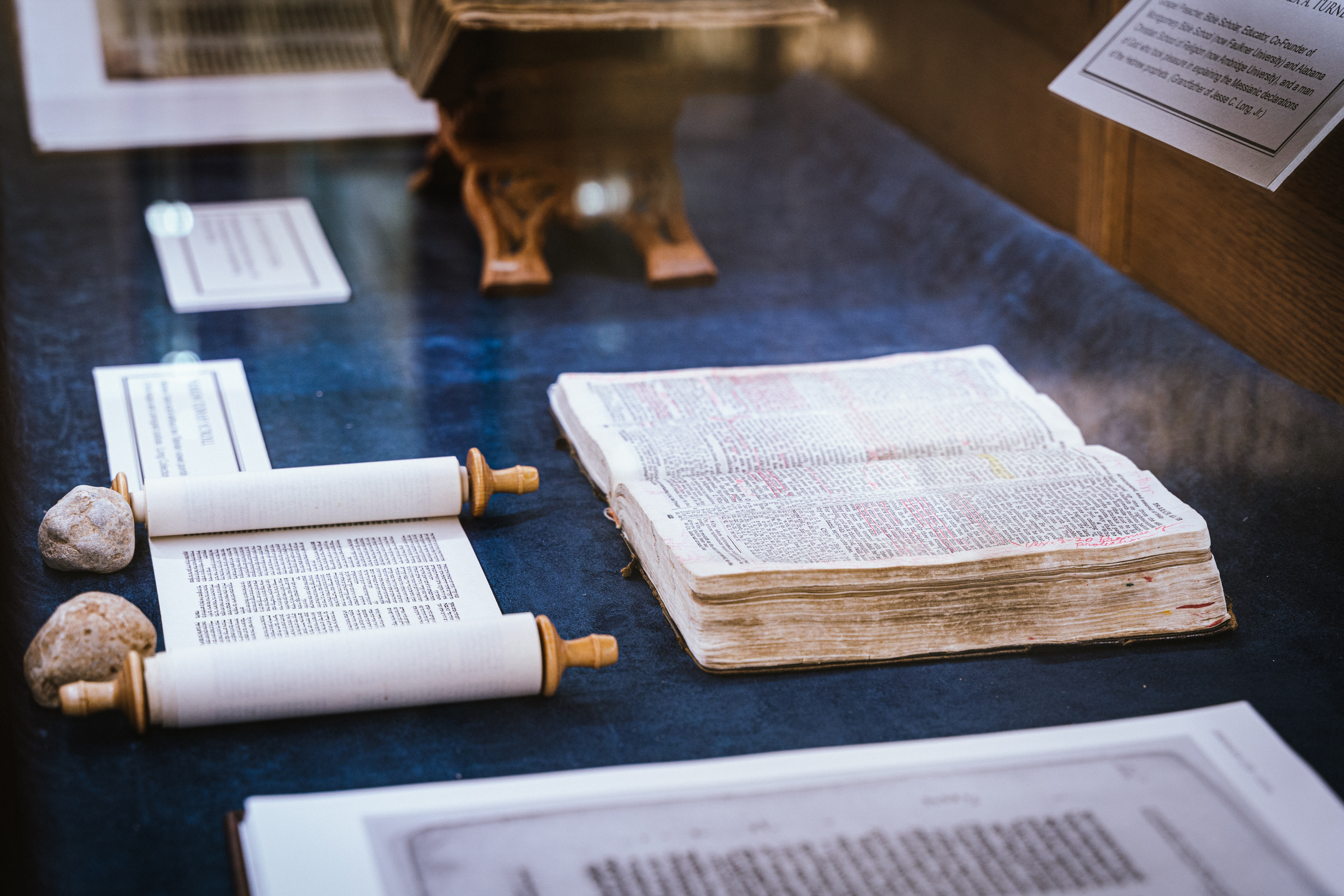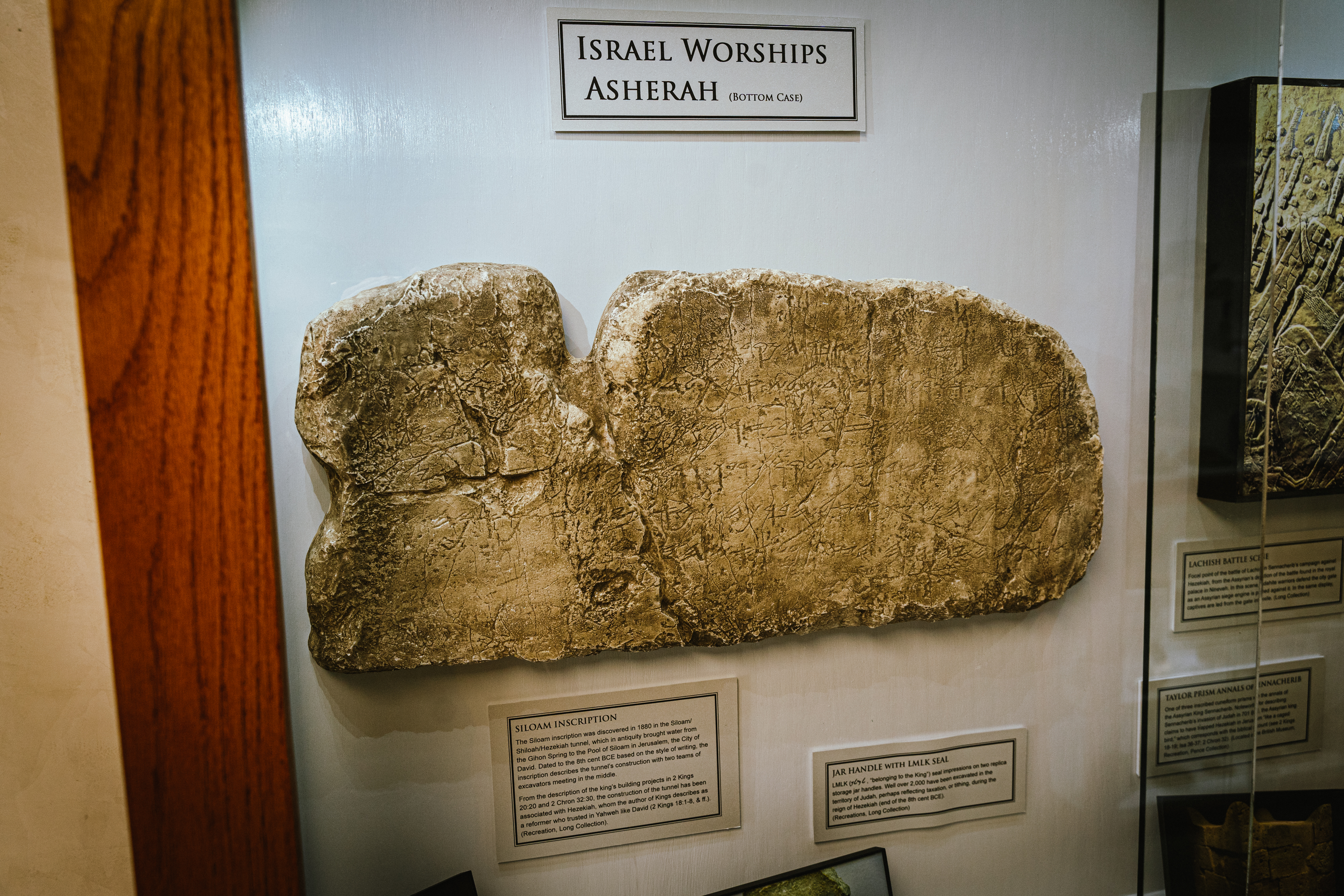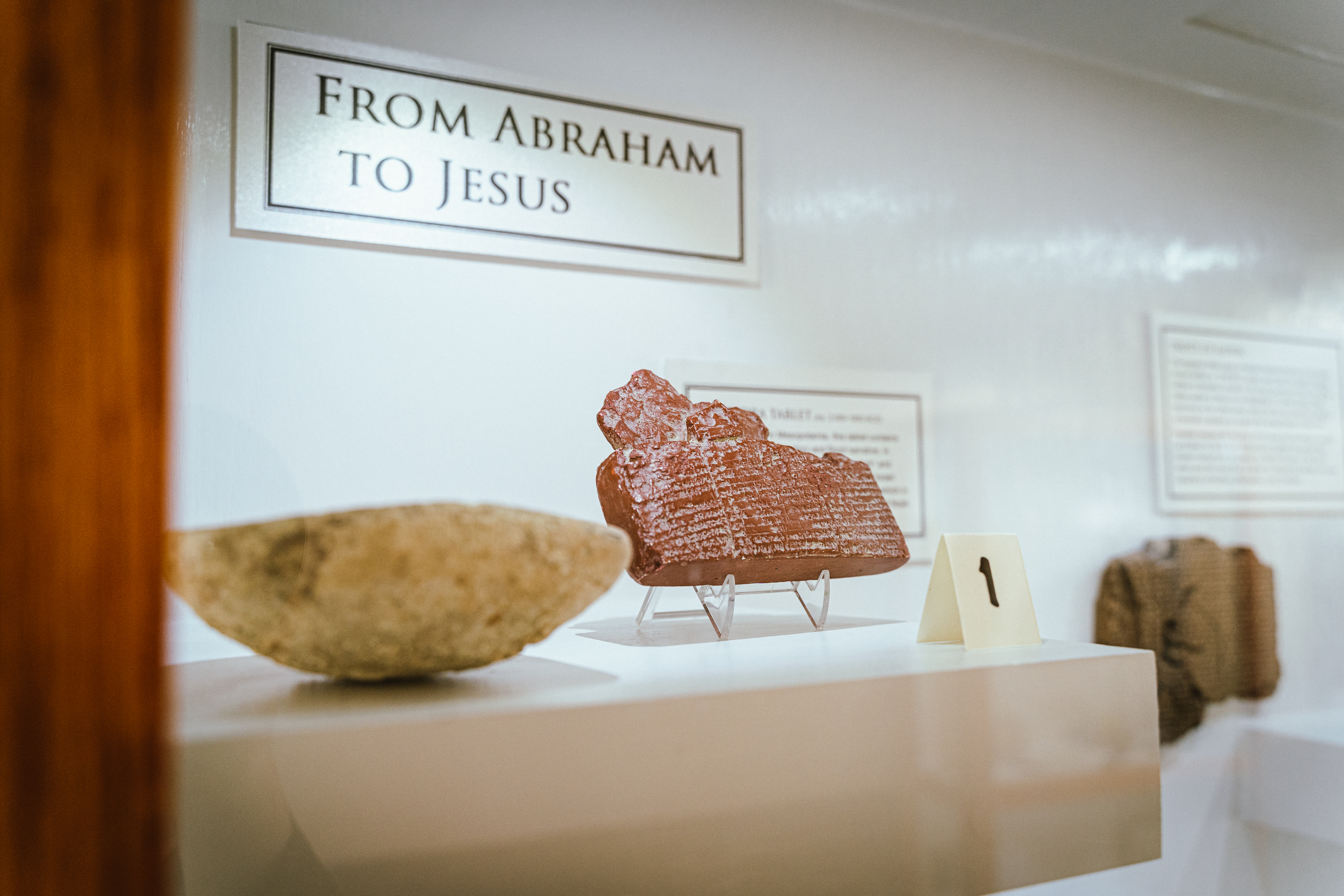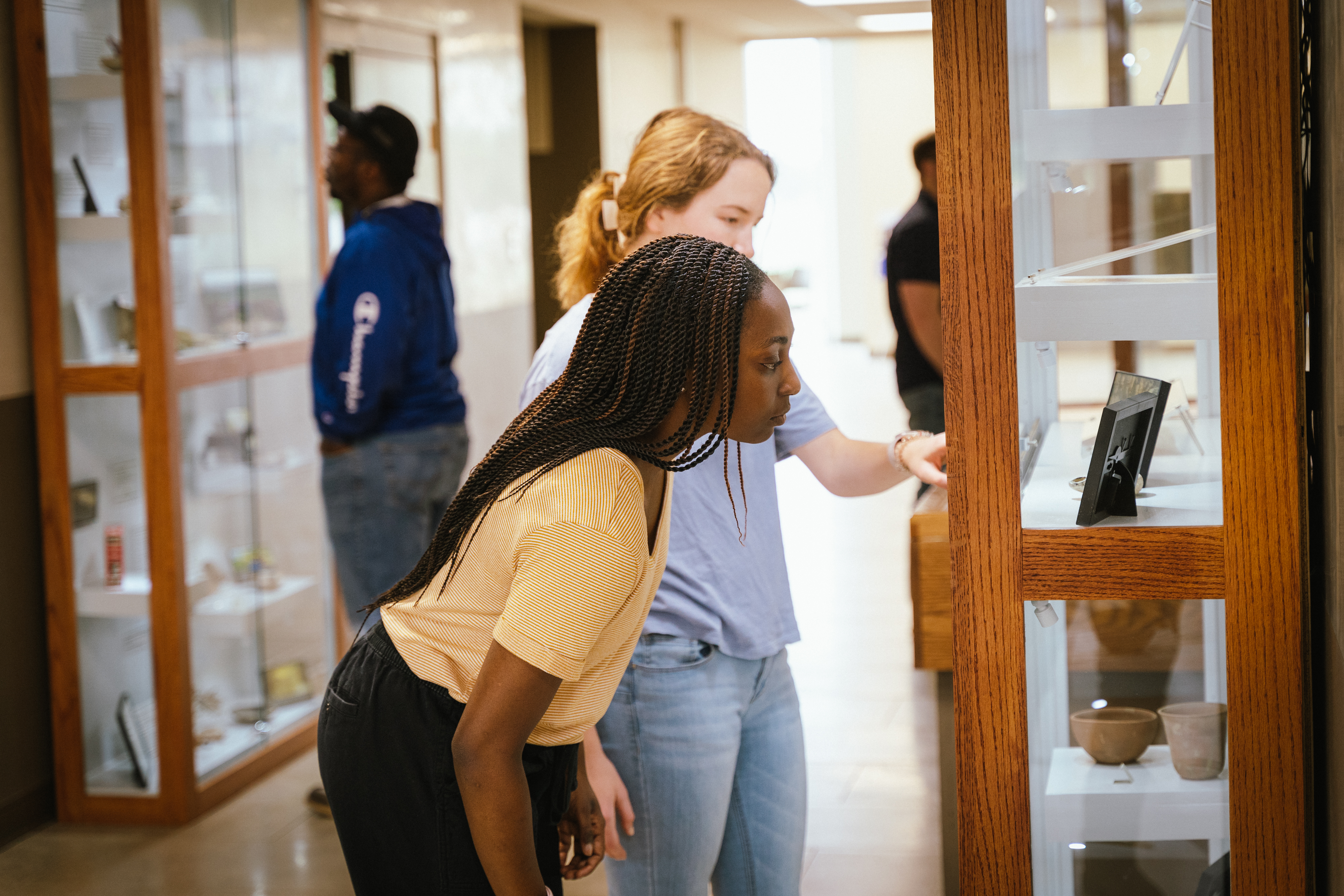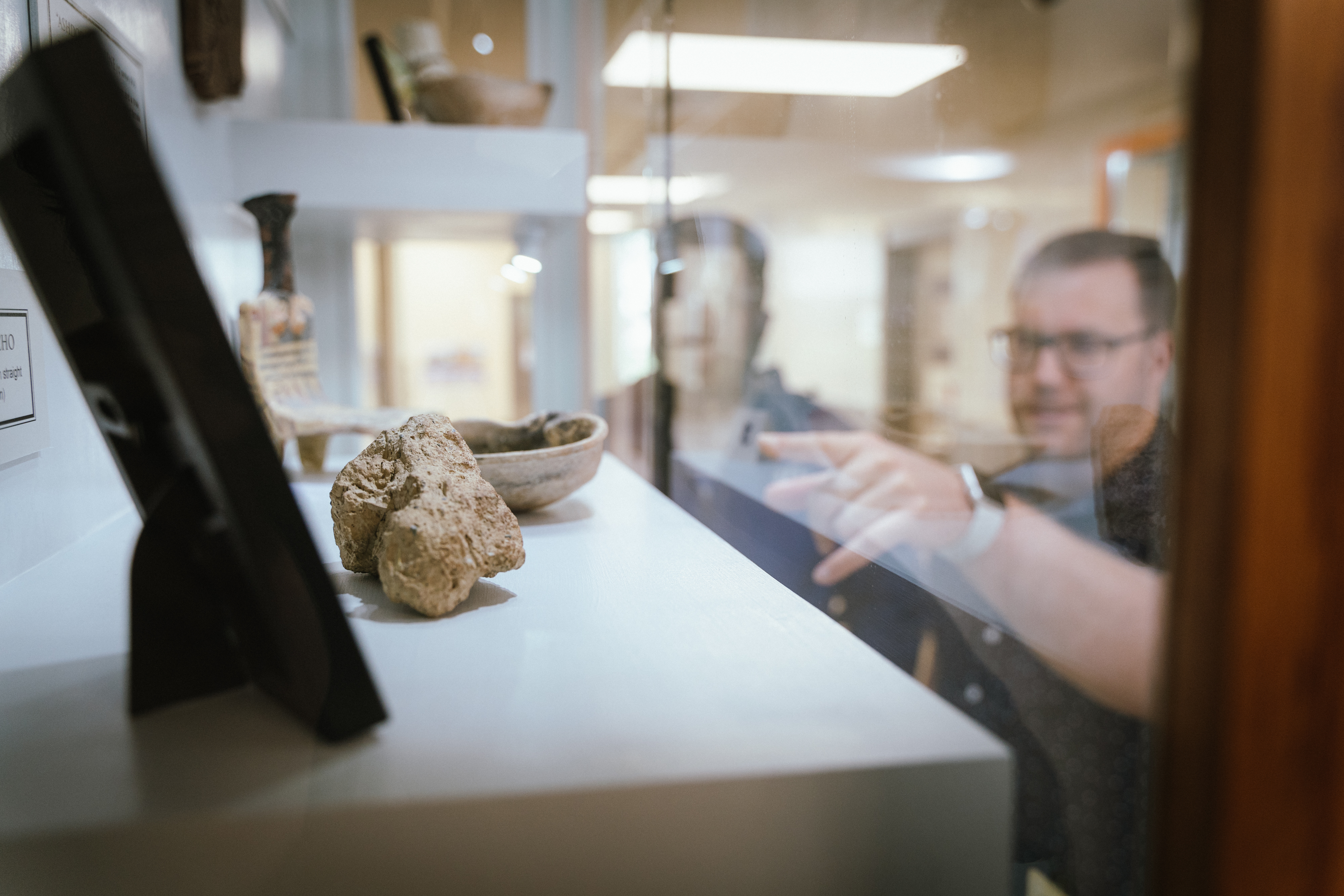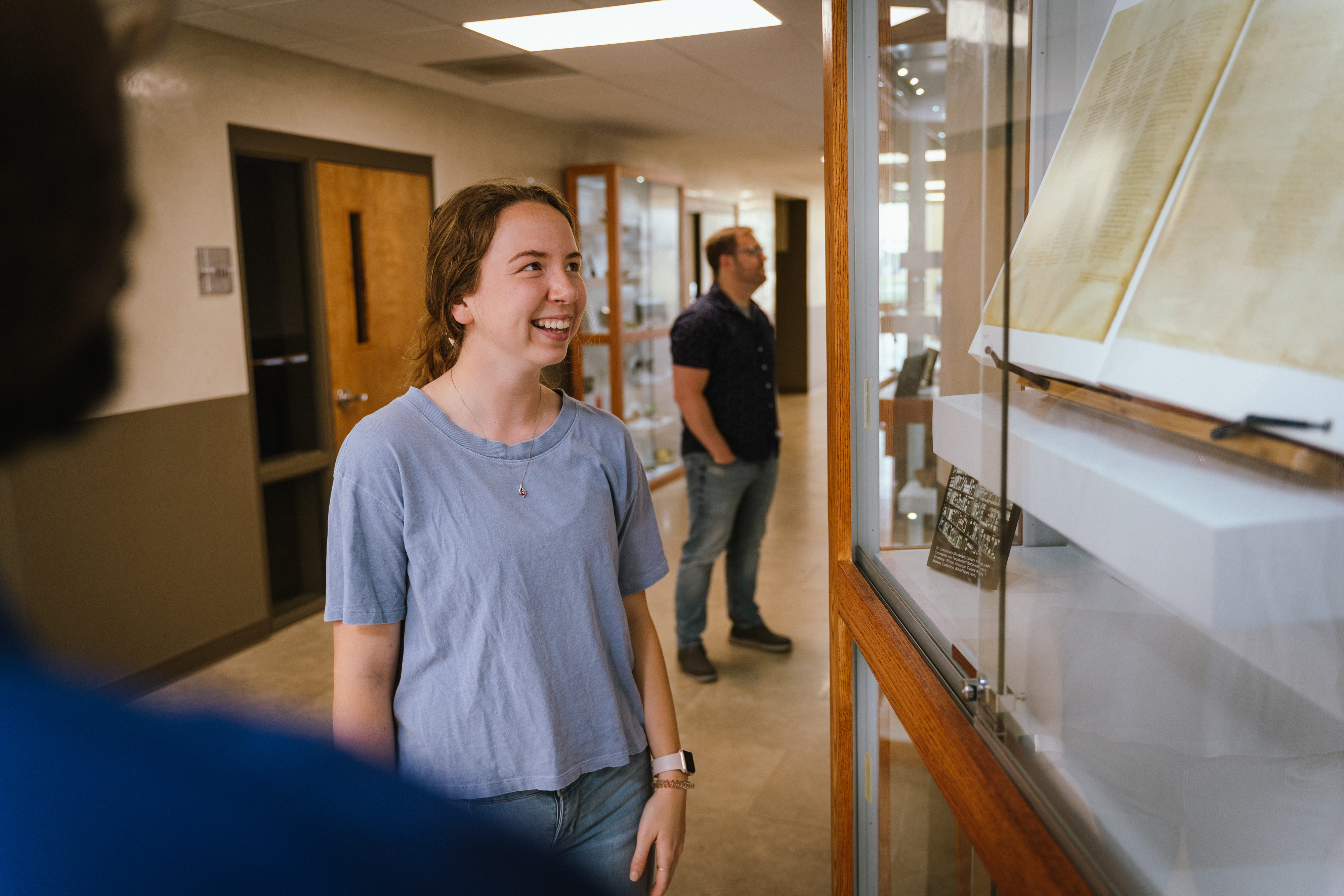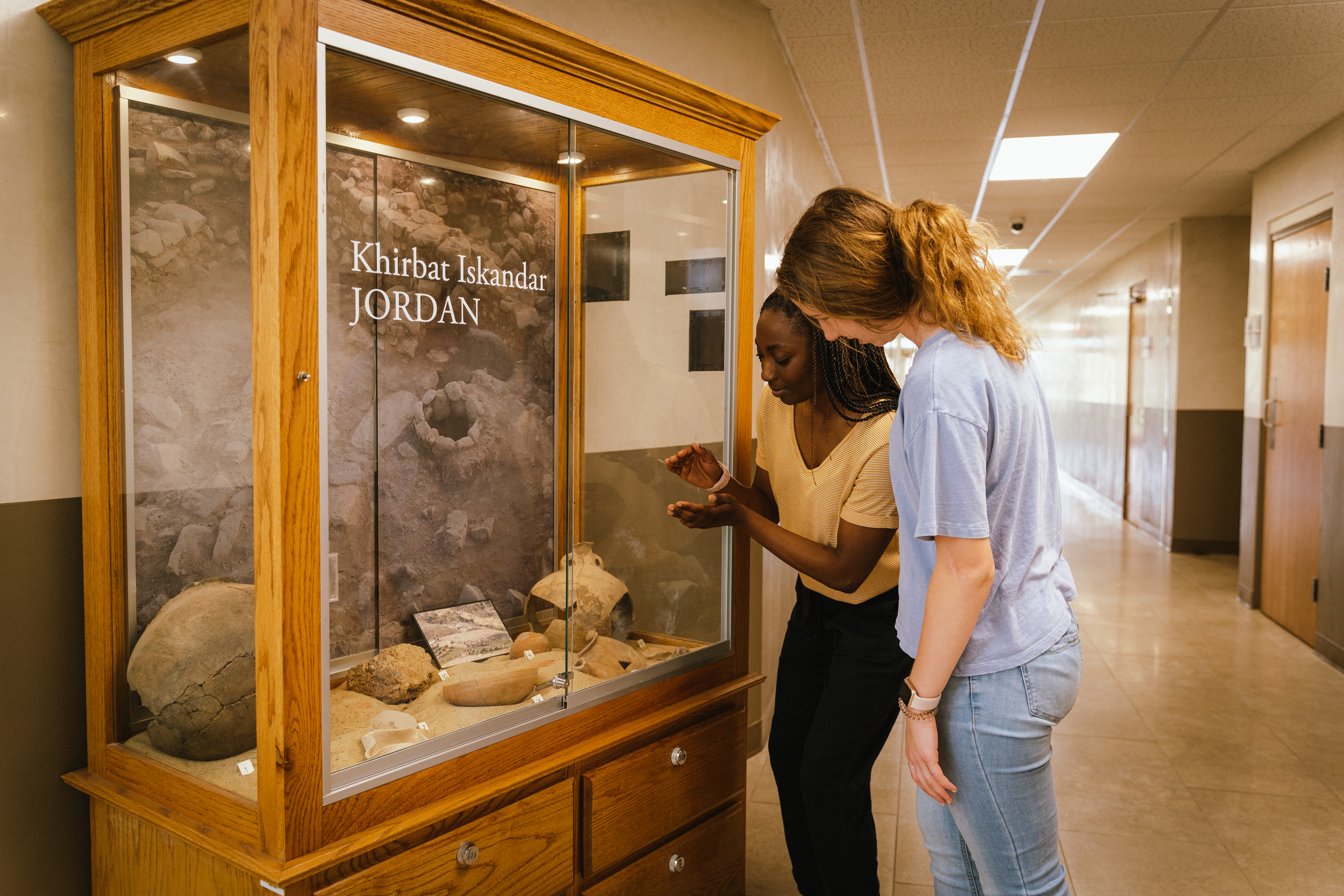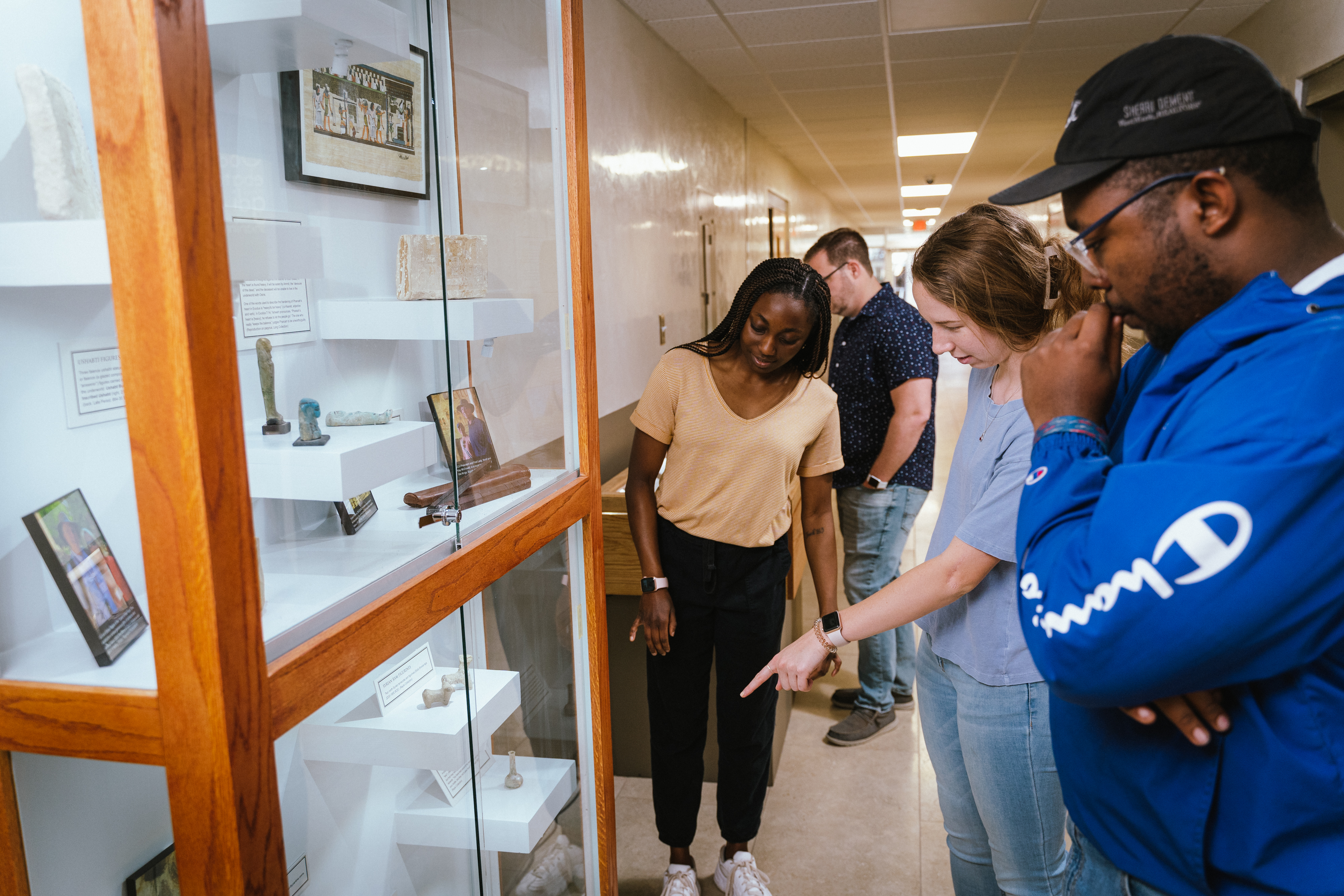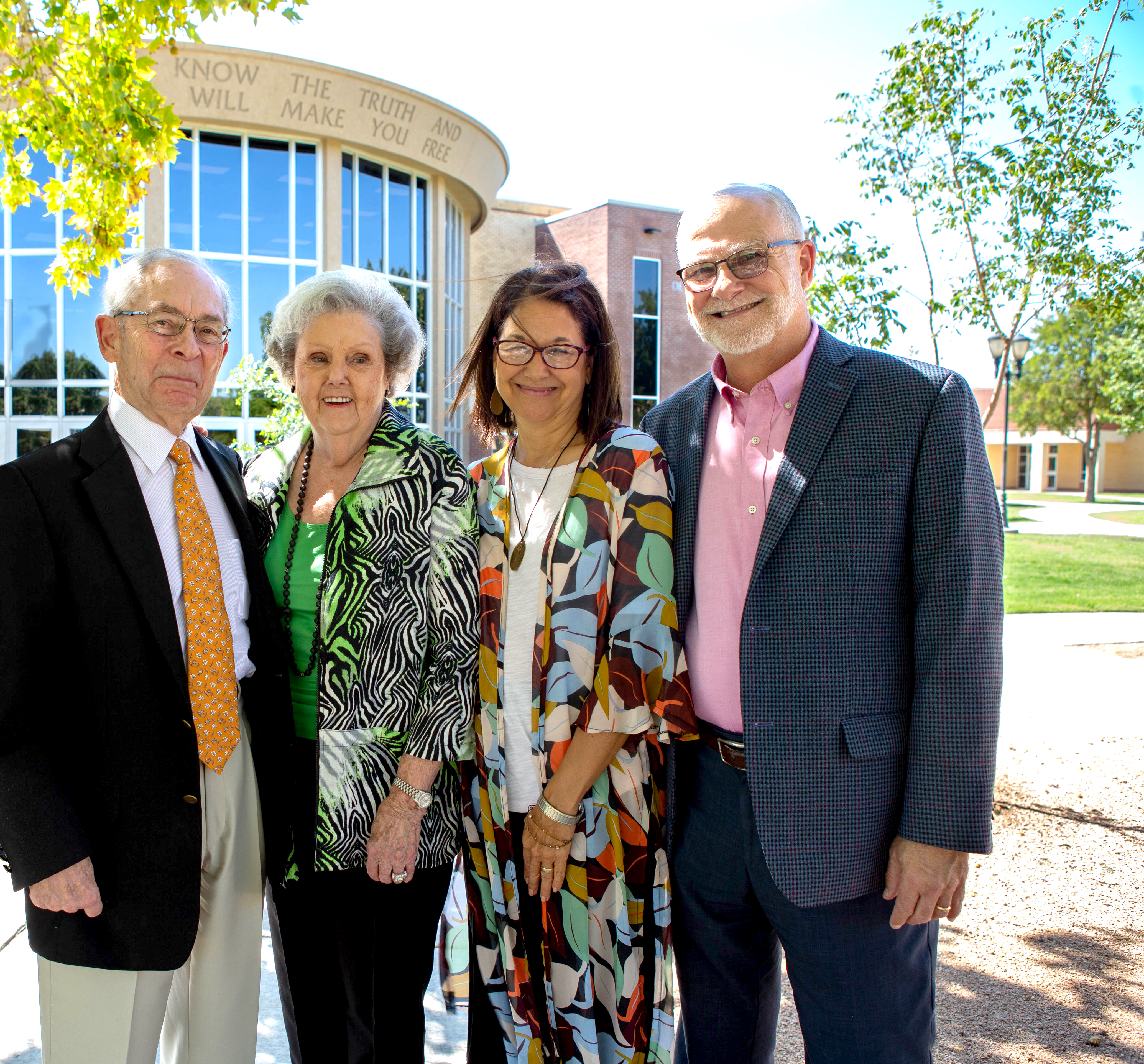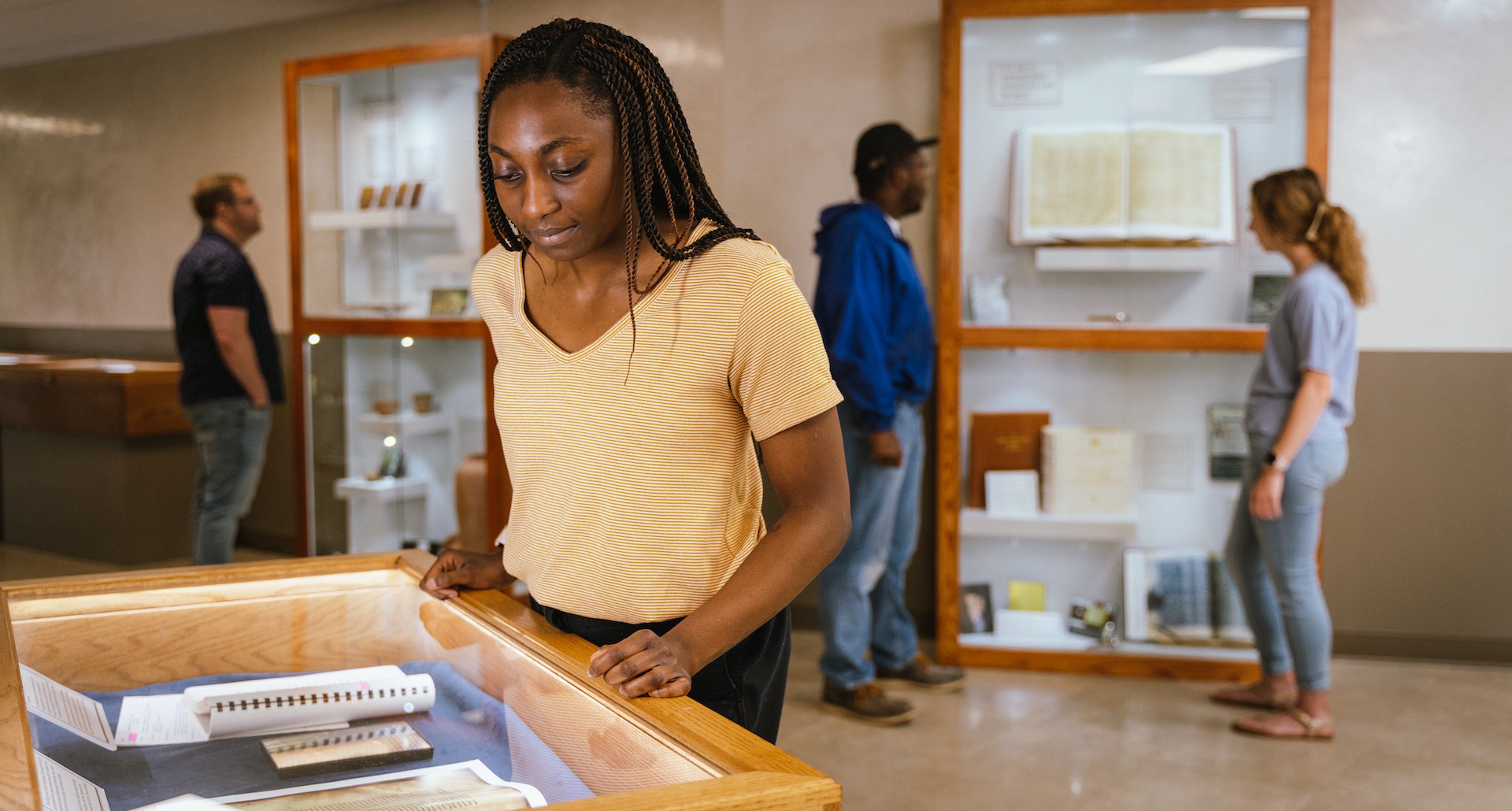
Howard Carter uncovered the world’s most famous archeological site, the tomb of King Tutankhamen. He recalled his first steps into the treasure room, “For the moment—an eternity it must have seemed to the others standing by—I was struck dumb with amazement, and when Lord Carnarvon, unable to stand the suspense any longer, inquired anxiously, 'Can you see anything?' it was all I could do to get out the words, 'Yes, wonderful things.”
Ancient artifacts bring with them a mixture of wonder and weight, giving life and color to ancient words and stories that might otherwise simply be words on a page. A new permanent exhibit titled “The Story of God in Scripture and Stone,” housed in LCU’s Christian Development Center showcases an expansive collection of historical replicas and artifacts spanning millennia from before the time of Abraham to the time of Jesus and the early church.
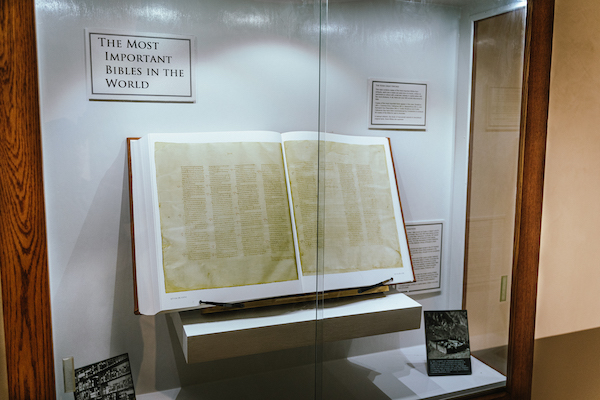
The collection of artifacts includes replicas of Codex Sinaiticus, often called "The most important Bibles in the world." The impressive collection includes artifacts donated by Bert and Betsy Rayle as well as a number of objects that LCU’s own Dr. Jesse Long, Professor of Old Testament and Biblical Archaeology, excavated during his time in Jordan along with others that he acquired in Israel. It also includes replicas of other important artifacts. Longtime LCU friend Gary Pence donated some of his personal collection to the exhibit, including copies of two of the oldest and most important biblical manuscripts used by scholars: Codex Sinaiticus and Codex Vaticanus.
“Codex Sinaiticus was found at St. Catherine’s Monastery at the foot of the traditional Mount Sinai,” Dr. Long shared, emphasizing not only its importance pertaining to biblical translation, but also its historical and sentimental value.
The exhibit also displays copies of various texts from the famous Dead Sea Scrolls, ancient coins, and various pieces of pottery from across the Holy Land. A collection of oil lamps from Dr. Long’s own excavations, commonly referenced in biblical texts, are featured in the display, and as Dr. Long shared, these items in particular serve an important role for archaeologists.
“The lamps help date the timeline,” he explained. “The form of lamps changed over time, a lot like Coke bottles have,” he added, referencing a small collection of vintage Coca-Cola bottles next to the lamps in the exhibit. “You can see the changes in the design of the glass bottles over time, and you can use that to help approximate a date. If you’re cleaning out an old house and you find in the basement an old coke bottle of this particular shape, you can guess that somebody probably lived there during the early 1900s. In the same way, archaeologist can use different styles of oil lamps they might find in a layer of a dig and estimate that the nearby artifacts in that same layer are likely from the same time period.”
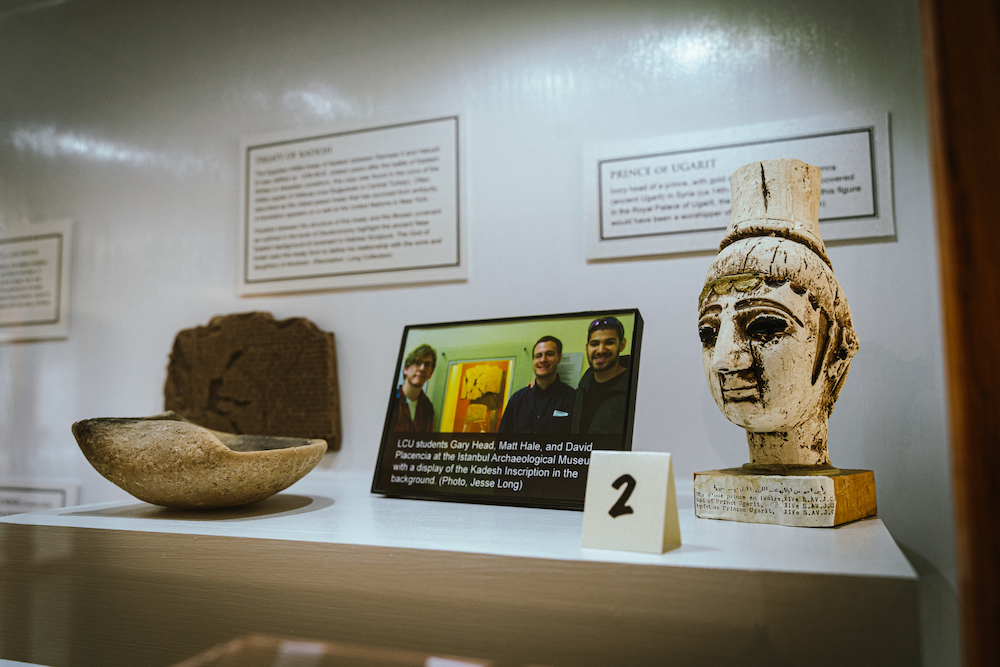
Among the artifacts held by LCU's College of Biblical Studies span thousands of years of biblical history.The display also includes a collection of Egyptian and Roman artifacts, like a figurine of the goddess Artemis from Ephesus. Figurines like these played an important part in the Apostle Paul’s visit to Ephesus, cataloged in the book of Acts. These and other artifacts are explained with placards authored by Dr. Jesse Long, which appear throughout the exhibit detailing important historical and biblical context for many of the pieces.
Many of the artifacts and parts of the display feature specific pieces from biblical stories or narratives. Dr. Long explained that one roman bowl included might have come from one of the most iconic scenes in the New Testament.
“The Herodian Bowl is likely very similar to the one in which Judas dipped his hand during the Last Supper,” he said. Then, turning to a small pile of seemingly ordinary rocks in the display, he added, “These stones come from the Valley of Elah, which is where the showdown between David and Goliath happened—these are smooth stones that came from the Wadi River, where David picked the stones for that fight.”
Dr. Long shared that these objects attest to the depth of scholarship in the Smith College of Biblical Studies, and they also help students and visitors to the exhibit better grasp the reality of the biblical narrative.
“There are so many of us in our culture who have grown up reading these stories, but being able to see and touch these physical examples actually brings those stories to life in a new and profound way,” he explained. “I remember one student who went with us to Israel who shared with me, ‘It's all much more real now.’”
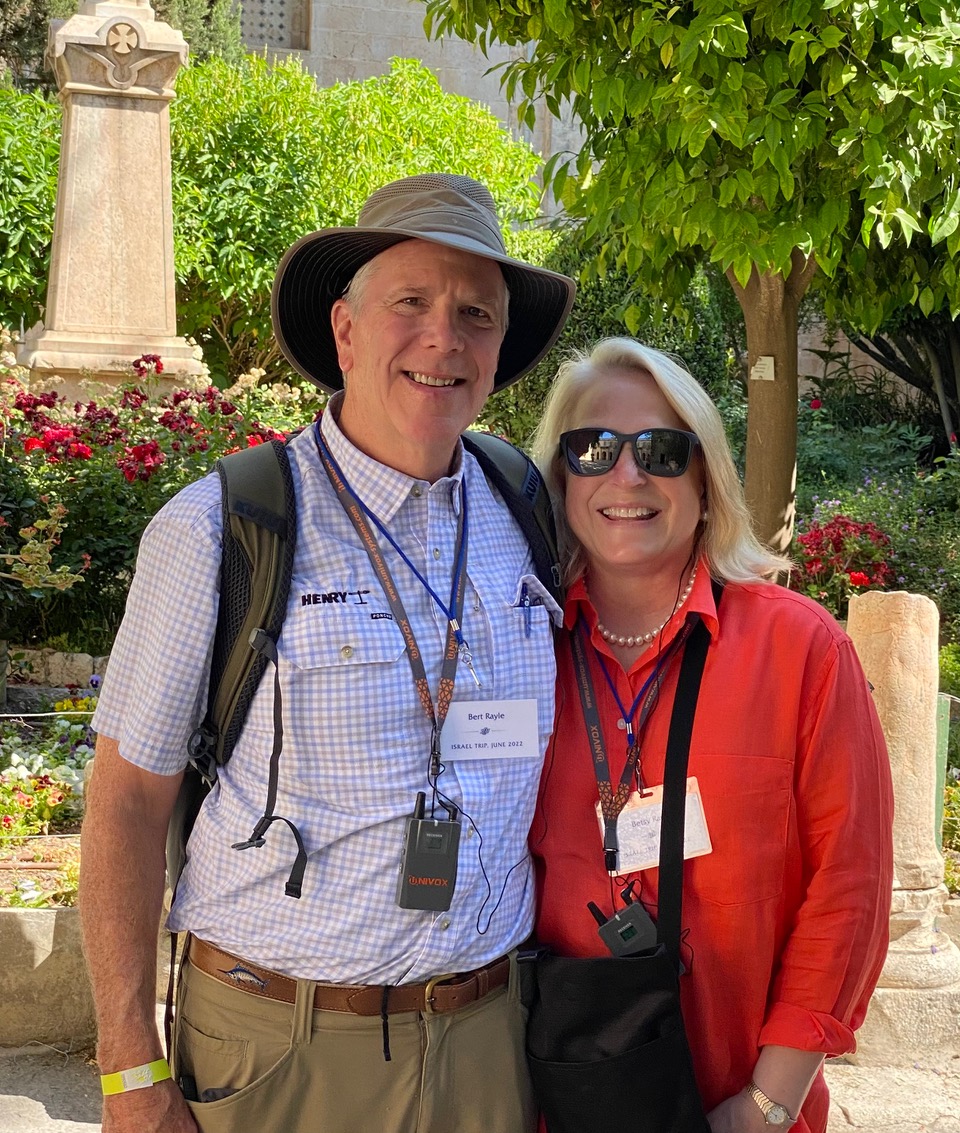
Bert and Betsy Rayle have generously provided both funds and artifacts for the exhibit.The display, which debuted during the 2023 Homecoming Weekend, was made possible thanks to the support of longtime friends of the university. Bert and Betsy Rayle generously provided funding to establish an archaeological exhibit, which includes relics from their personal collection. The exhibit also includes gifts from Gary Pence, who contributed historically significant biblical manuscripts and artifacts from his personal collection.
“Bert and Betsy have travelled with us twice to Israel, and they have seen the heart of LCU,” shared Raymond Richardson, Vice President of University Advancement, referring to the archaeological trips to the Middle East led for over a decade by Dr. Long and his wife, JoAnn, Professor of Nursing at LCU.
Dr. Long explained, “The Rayles have been drawn to LCU through the Land of the Holy One trips, and they want to support what we're doing. They are excited to provide our students and others a glimpse into the history of the Bible, and they want to preserve and promote God's word through artifacts.”
These recent gifts add to the generous support that LCU’s programs continue to receive from friends like Al and Pat Smith, for whom the Alfred and Patricia Smith College of Biblical Studies is named.
“Al and Pat Smith and their investment in our university has provided numerous life-changing opportunities for our students; without their generosity, many of these things couldn't happen,” emphasized Dr. Long.
